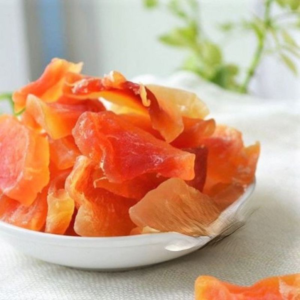Last updated on November 29th, 2024 at 10:38 am
Exporting high-quality dried mango is a lucrative opportunity, particularly with the rising demand for natural, healthy snacks globally. As a dried mango exporter in Vietnam, it’s crucial to ensure your product meets international standards and appeals to foreign markets. Here’s a guide on selecting and preparing dried mango for successful export:

1. Select the Best Mangoes for High-Quality Dried Mango
The first step in producing high-quality dried mango is selecting premium fresh mangoes. Varieties like Cát Hòa Lộc, Keo, or Tứ Quý are ideal due to their natural sweetness and rich flavor. They are highly sought after in international markets. Ensure the mangoes are ripe but not overly soft, and free from bruises or defects, as these factors can negatively affect the final dried product.
2. Use Optimal Drying Methods for High-Quality Dried Mango
The drying method significantly influences the quality of the final product. Two popular methods are:
- Hot Air Drying: This method is cost-effective but can affect the color and nutrient content of the mango.
- Freeze Drying: Freeze-drying preserves the natural color, flavor, and nutritional value, making it a preferred choice for premium markets.
To meet mango export guidelines, avoid using chemical preservatives, especially when targeting strict markets like the EU and the USA.
3. Ensure Product Quality
High-quality dried mango must meet the following standards:
- Moisture Content: The ideal moisture content is 15-20%. Too much moisture leads to spoilage, while too little can result in a brittle texture.
- Color: A vibrant yellow or orange color indicates freshness. Dried mangoes should be free from discoloration or dark spots.
- Taste: The product should maintain its natural sweetness without excessive sugar or additives.
4. Packaging and Storage
Proper packaging ensures the product remains fresh and appealing. Use moisture-proof, airtight packaging to protect the mango from humidity and contamination. Ensure the labels comply with mango export guidelines, including clear information on ingredients, production date, and storage instructions. Store the dried mango in a cool, dry place to maintain its quality during transport and shelf life.
5. Partner with a Quality Supplier
Choosing a reliable supplier is essential for maintaining consistent quality. One trusted source is Qualitex, a leading supplier of dried fruits, including dried mango. Qualitex offers a variety of high-quality dried fruits that meet international standards for export.
- Learn more about Qualitex.
- Explore their full range of dried fruits.
- Check out their soft-dried mango.
Conclusion
Exporting high-quality dried mango involves careful selection of fresh mangoes, using appropriate drying techniques, and ensuring the final product meets international standards. By working with trusted suppliers like Qualitex and adhering to strict mango export guidelines, you can deliver a product that appeals to global markets and maintains your competitive edge.








